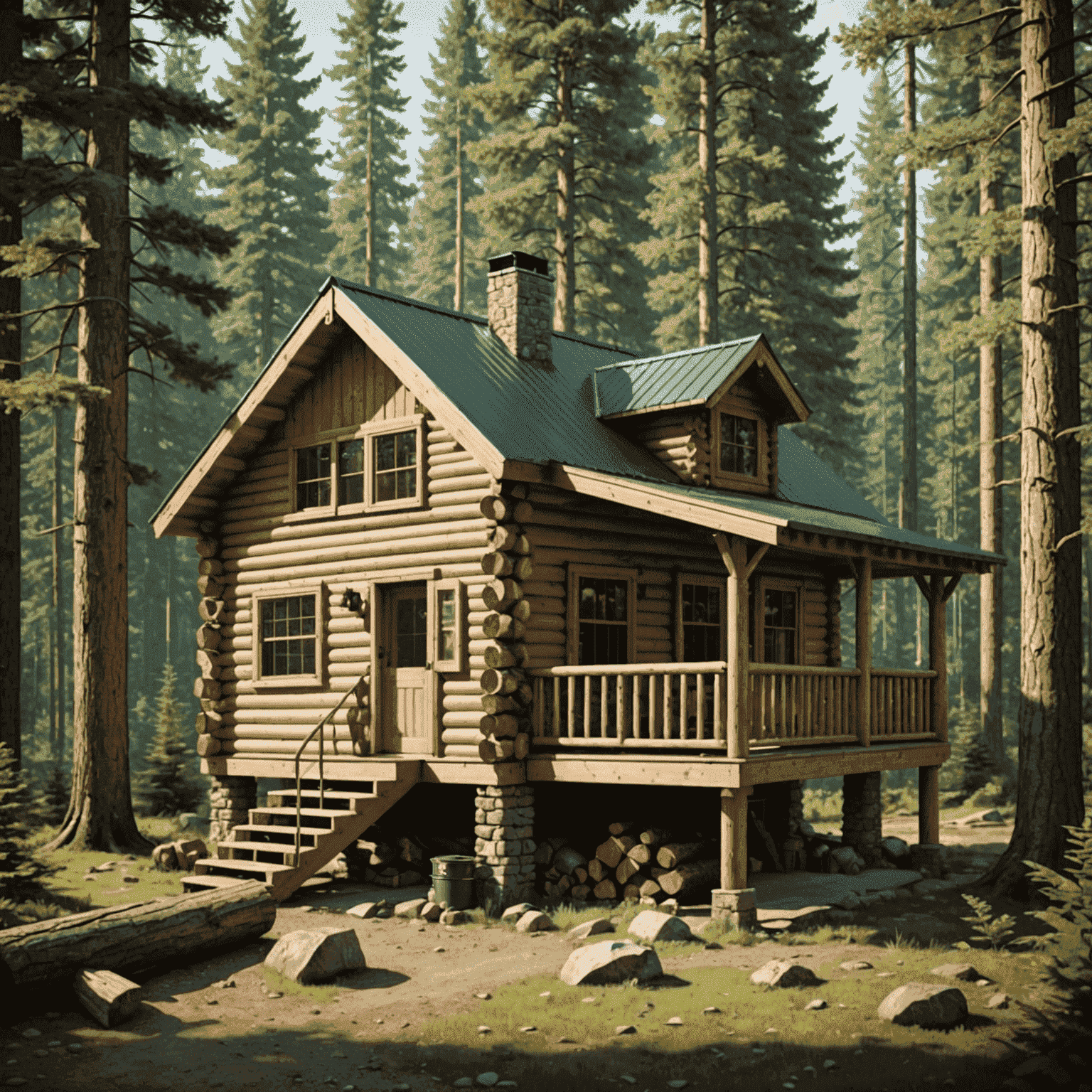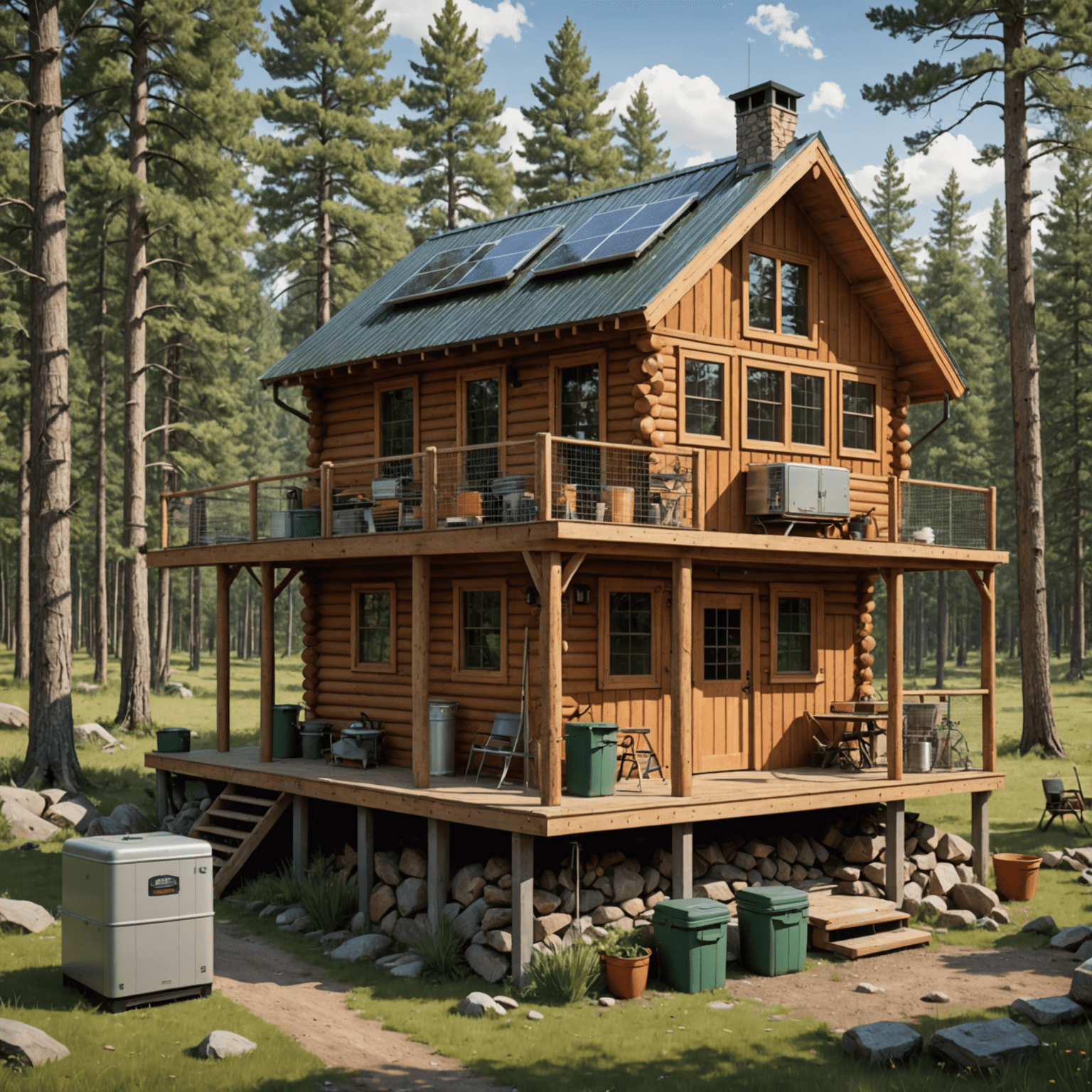Wildlife-Proofing Your Cabin

When building a shelter in the wilderness, protecting it from wildlife is crucial for your safety and the longevity of your structure. This guide will walk you through effective strategies to wildlife-proof your cabin, ensuring a secure retreat in the heart of nature.
Understanding the Threats
Before implementing protective measures, it's essential to identify potential wildlife threats in your area. These may include:
- Large predators (bears, wolves)
- Medium-sized animals (raccoons, foxes)
- Small pests (rodents, insects)
Structural Reinforcements
Start with the cabin's structure itself:
- Sturdy Materials: Use robust materials like thick logs or reinforced lumber for walls and roofing.
- Secure Windows: Install metal bars or shutters on windows to prevent break-ins by larger animals.
- Reinforced Doors: Use solid core doors with deadbolts and metal frames.
- Elevated Foundation: Build your cabin on stilts or a raised foundation to deter ground-dwelling creatures.
Food Storage Solutions
Proper food storage is critical in preventing wildlife attraction:
- Install a bear-proof food locker outside the cabin.
- Use airtight, odor-proof containers for all food items.
- Consider a separate, secure building for food storage if feasible.
Waste Management
Proper waste disposal is crucial:
- Use bear-resistant trash cans or a dedicated, secure trash shed.
- Regularly clean and sanitize areas where food is prepared or consumed.
- Dispose of waste frequently, especially in bear country.
Perimeter Protection
Create a buffer zone around your cabin:
- Electric Fencing: Install electric fencing around the cabin perimeter to deter larger animals.
- Motion-Activated Lights: Use bright, sudden illumination to startle and deter nocturnal visitors.
- Natural Deterrents: Plant peppermint or use predator urine around the cabin to repel smaller animals.
Sealing Entry Points
Prevent small pests from entering:
- Seal all gaps and crevices in the cabin's exterior with steel wool or caulk.
- Install mesh screens on vents and chimneys.
- Use door sweeps to close gaps under doors.
Regular Maintenance
Ongoing upkeep is essential:
- Conduct regular inspections for signs of animal activity or damage.
- Promptly repair any structural damage to prevent escalation.
- Keep the surrounding area clear of attractants like fallen fruit or unsecured bird feeders.
Emergency Preparedness
Be ready for wildlife encounters:
- Stock bear spray and know how to use it.
- Have a first aid kit readily available.
- Create an emergency plan for potential wildlife confrontations.
By implementing these strategies, you can significantly reduce the risk of wildlife intrusions and damage to your wilderness cabin. Remember, coexisting with nature means respecting wildlife and taking proactive measures to protect both yourself and the animals. With proper planning and execution, your cabin can be a safe haven in the heart of the wild.
